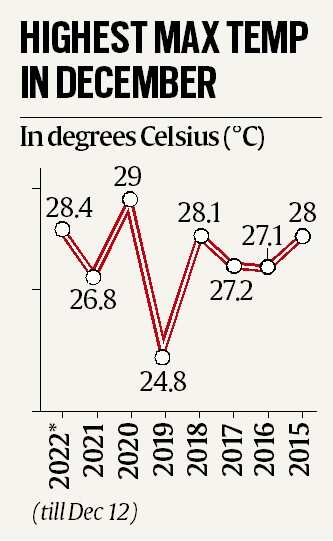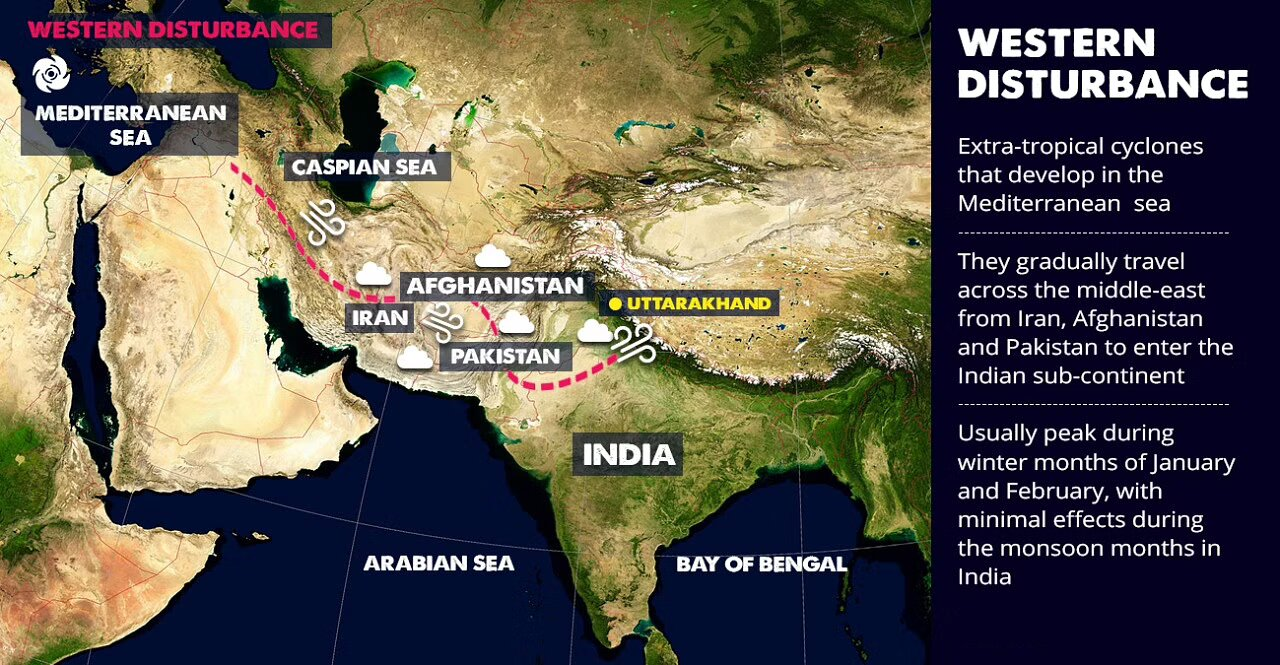Geography
Western Disturbances
- 13 Dec 2022
- 4 min read
For Prelims: Western Disturbances, Caspian Sea, Mediterranean Sea, India Meteorological Department, Flash Floods, landslides, Cold Wave
For Mains: Physical Geography, Western Disturbances and its Unusual Behavior
Why in News?
Recently, the daytime’s temperatures in Delhi were above normal in December 2022 because of fewer Western Disturbances (WD).
- In winter, WD brings rain and snow over the hills, and more moisture to the plains. The cloud cover results in higher minimum temperatures at night and lower day-time or maximum temperatures.
What are Western Disturbances?
- About:
- Western disturbances are storms that originate in the Caspian or Mediterranean Sea, and bring non-monsoonal rainfall to northwest India, according to the India Meteorological Department (IMD).
- A Western Disturbance, labelled as an extra-tropical storm originating in the Mediterranean, is an area of low pressure that brings sudden showers, snow and fog in northwest India.
- The disturbance travels from the “western” to the eastern direction.
- These travel eastwards on high-altitude westerly jet streams - massive ribbons of fast winds traversing the earth from west to east.
- They gradually travel across the middle-east from Iran, Afghanistan and Pakistan to enter the Indian sub-continent.
- Disturbance means an area of “disturbed” or reduced air pressure.
- Equilibrium exists in nature due to which the air in a region tries to normalise its pressure.
- Impact in India:
- A WD is associated with rainfall, snowfall and fog in northern India. It arrives with rain and snow in Pakistan and northern India.
- The moisture which WDs carry with them comes from the Mediterranean Sea and/or from the Atlantic Ocean.
- WD brings winter and pre-monsoon rain and is important for the development of the Rabi crop in the Northern subcontinent.
- The WDs are not always the harbingers of good weather. Sometimes WDs can cause extreme weather events like floods, flash floods, landslides, dust storms, hail storms and cold waves killing people, destroying infrastructure and impacting livelihoods.
- During the summer months of April and May, they move across North India and at times help in the activation of monsoon in certain parts of northwest India.
- During the monsoon season, western disturbances may occasionally cause dense clouding and heavy precipitation.
- Weak western disturbances are associated with crop failure and water problems across north India.
- Strong western disturbances can help residents, farmers and governments avoid many of the problems associated with water scarcity.
What have been the Recent Instances/Impact of WD?
- Excess rainfall was recorded in January and February 2022. In contrast, there was no rainfall in November 2021 and March 2022, and the summer saw an unusually early start with heat waves setting in at the end of March 2022.
- Multiple western disturbances that brought cloud cover had also kept the maximum temperature low in February 2022, when the lowest maximum temperature in 19 years was recorded.
- Active western disturbances eluded northwest India in March 2022, and absence of cloud cover and rain allowed temperatures to remain high.
- The frequency of western disturbances has increased, but not the precipitation associated with them, partly due to a warming atmosphere (Global Warming).
- In 2021, western disturbances brought rain to Delhi in the first week of December.
- Delhi is, however, likely to get colder with the maximum temperature likely to fall to around 24 degrees by December 15, 2022.









